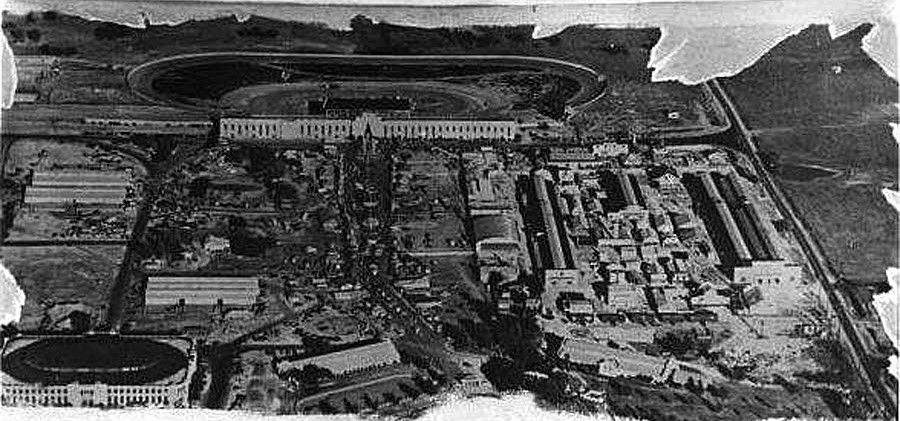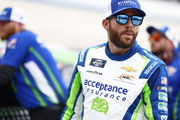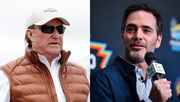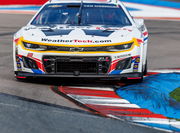

Driver safety in NASCAR has evolved to an exemplary level. However, the situation hasn’t always been the same since NASCAR’s inception. Driving at such high speeds was already a big enough risk for drivers. To add the differential of risky track conditions to that was simply a disaster waiting to happen. Drivers have often protested about certain factors making races dangerous. One of the finest examples of the same is the only race to be wiped from NASCAR’s record books, the 1956 Tulsa Fairgrounds Grand National Race.
Watch What’s Trending Now!
As popular as dirt racing is currently, dirt tracks were a huge problem during the initial days of NASCAR racing. Lack of visibility and unfeasible driving conditions were some of the major concerns that emerged from this type of surface. In 1956, what was scheduled to be NASCAR’s first-ever official dirt race culminated in one of the most controversial boycotts in racing history.
ADVERTISEMENT
A NASCAR race where drivers couldn’t stop dropping out
In 1956, NASCAR’s two most attractive and best-performing divisions were the Grand National and the Convertible Divisions. Both series arrived at the Tulsa Fairgrounds Speedway in 1956, with the Convertibles racing in June and the Grand National race on August 4.
While the Convertible race had 20 drivers competing for victory, the latter had only 13 drivers on the grid. However, no one had expected that the 100-mile race would be a lackluster display, with one of the drivers turning into the flag man.
Speedy Thompson started in P1 and had already understood that the dirt track was not sustainable for another night of intense racing. The lights factoring in made the lack of visibility a huge hindrance for the drivers. Bill Moore, who started 10th in his Pontiac, had to retire from an engine overheating in the 9th lap. Debutant John Schipper crashed in the 11th lap due to not being able to chart the course.
ADVERTISEMENT
Jack Zink followed suit as he crashed violently in the 17th lap. This was a missed chance for Zink to win in his home city. On top of that, being the promoter of the race, Jack Zink was unhappy about how the race unfolded.
ADVERTISEMENT
Another major reason was the timing of the race by NASCAR. Oklahoma is no less than a dust bowl in summer, and the dirt clouds were only natural during that time. In the 28th lap, Oklahoma-based driver Augie Howerton blew his engine. Howerton had raced on the dirt track previously in June’s Convertible race.
ADVERTISEMENT
Read More: Ingenious Cheats In NASCAR: Edition 4 – The Water Bottle Cautions
Johnny Allen, who started 12th, retired similarly to Bill Moore. By the time Moore withdrew from the race, only seven drivers were still competing on the dusty track. What followed was a dramatic turn of events as the legendary Lee Petty decided to take the matter into his own hands.
Top Stories
Ross Chastain Labels NASCAR Driver “The Most Punchable Face” to Excuse Himself Over Punchgate Controversy

Commissioner Steve Phelps Quits NASCAR Days After Getting Exposed in Lawsuit Trial

Who Is Steve Phelps? NASCAR Commissioner’s Net Worth, Wife & NASCAR Contract

Jimmie Johnson Poaches Richard Childress’ Key Ally Ahead of NASCAR 2026 Season

NASCAR Rumor: Justin Marks’ Trackhouse to Lose $4.5M in Sponsorship After Billionaire Partner’s Exit

ADVERTISEMENT
Lee Petty turned into a flagman
Seeing his fellow drivers retire from the race successively, Lee Petty, who was already two laps behind the leading lap, decided to stop his car in the 34th lap. Petty climbed out of his car and went to the flagman. Lee Petty was understandably angry, considering the only reason the race came through was the massive crowd at the Tulsa Fairgrounds.
Petty was aggressive and tried to snatch the red flag from the flagman. He wanted to put a pause to the conundrum in the dust. Petty was successful in his idea and immediately waved the red flag to alert his NASCAR colleagues. However, this could have gone down better with the crowd.
The fans erupted into a burst of fury as confusion spread around the Tulsa Fairgrounds Speedway. City and county police were summoned, which turned out to be the easiest way to control the furious fans. Police got to work immediately and stopped a potential outburst from happening. Thankfully, an agreement was reached which would see the fans get a refund of their money.
ADVERTISEMENT
The return of the ticket money satisfied the fans rather than the drivers, who were hoping for something else. Since then, NASCAR has wiped the race from the official records. Eventually, the speedway was demolished in 1973. This is the story of the race that never happened.
Watch This Story: Dale Earnhardt Jr reacts as insider triggers vicious Talladega memory
ADVERTISEMENT
ADVERTISEMENT
ADVERTISEMENT

